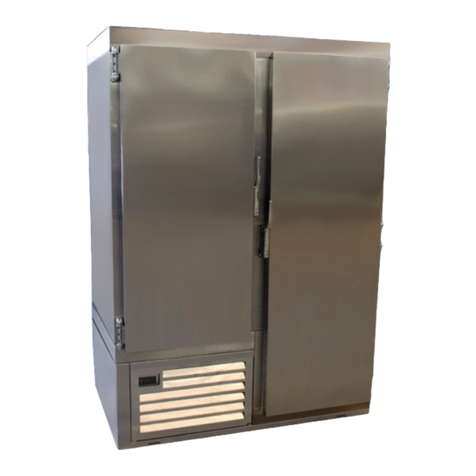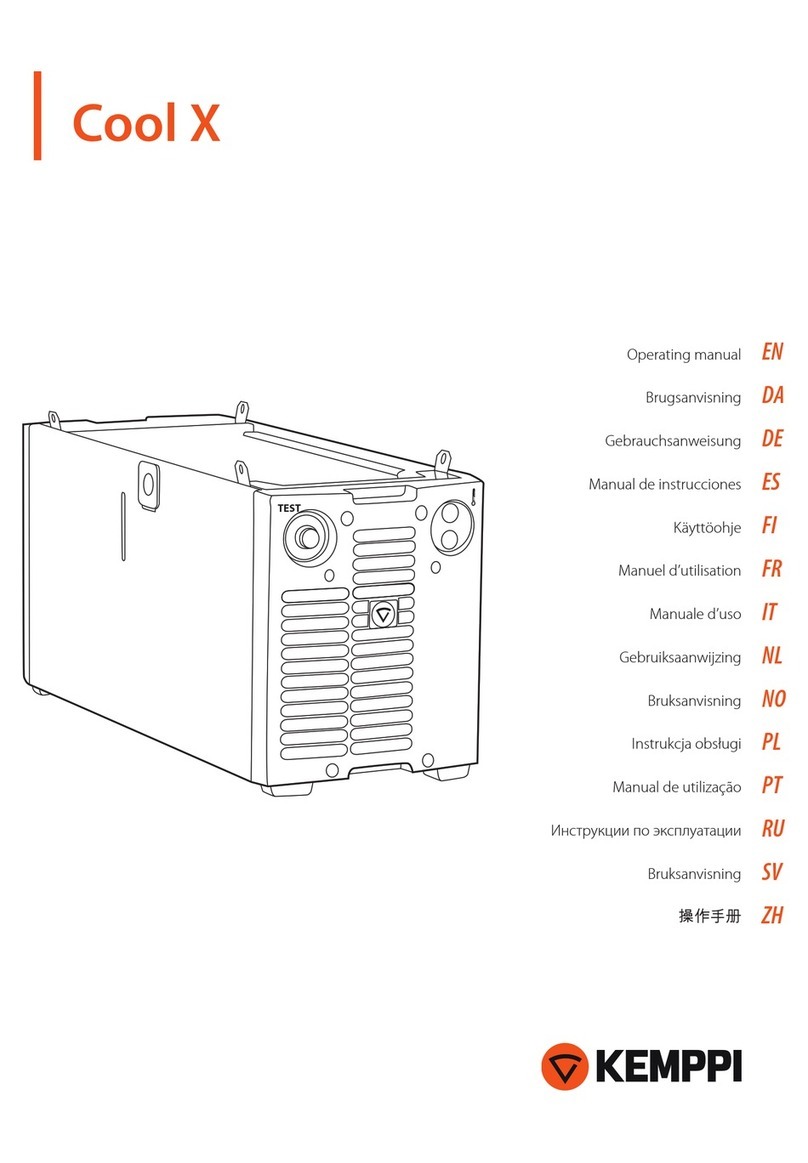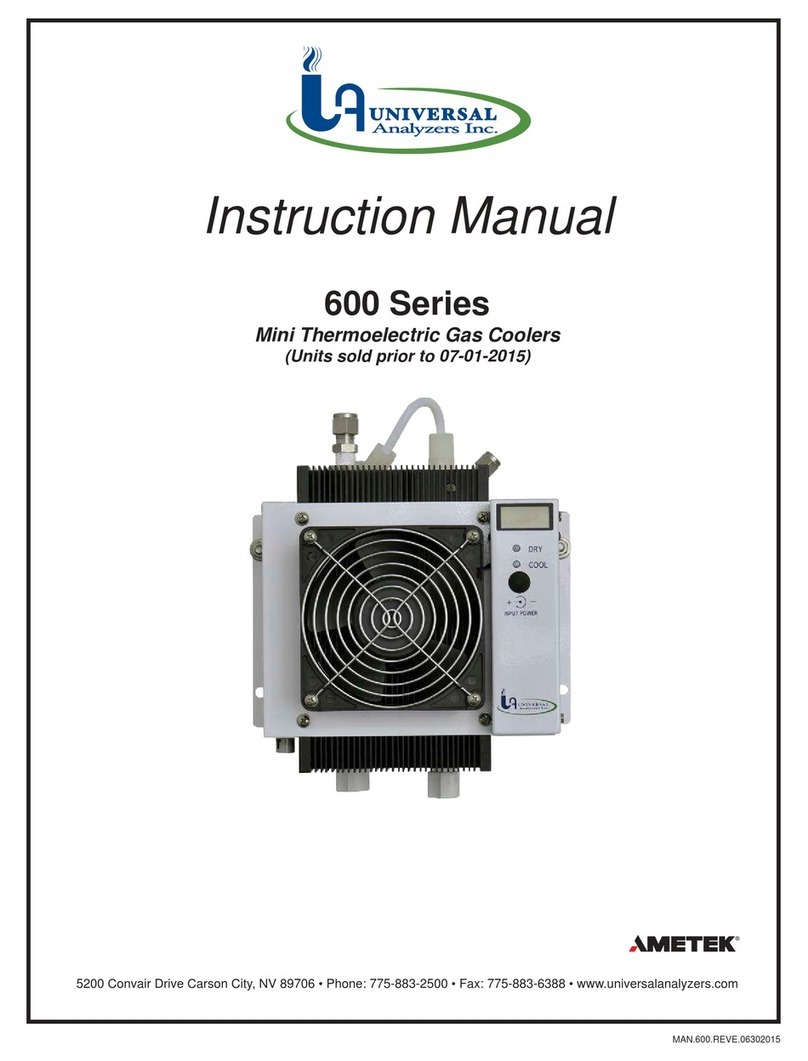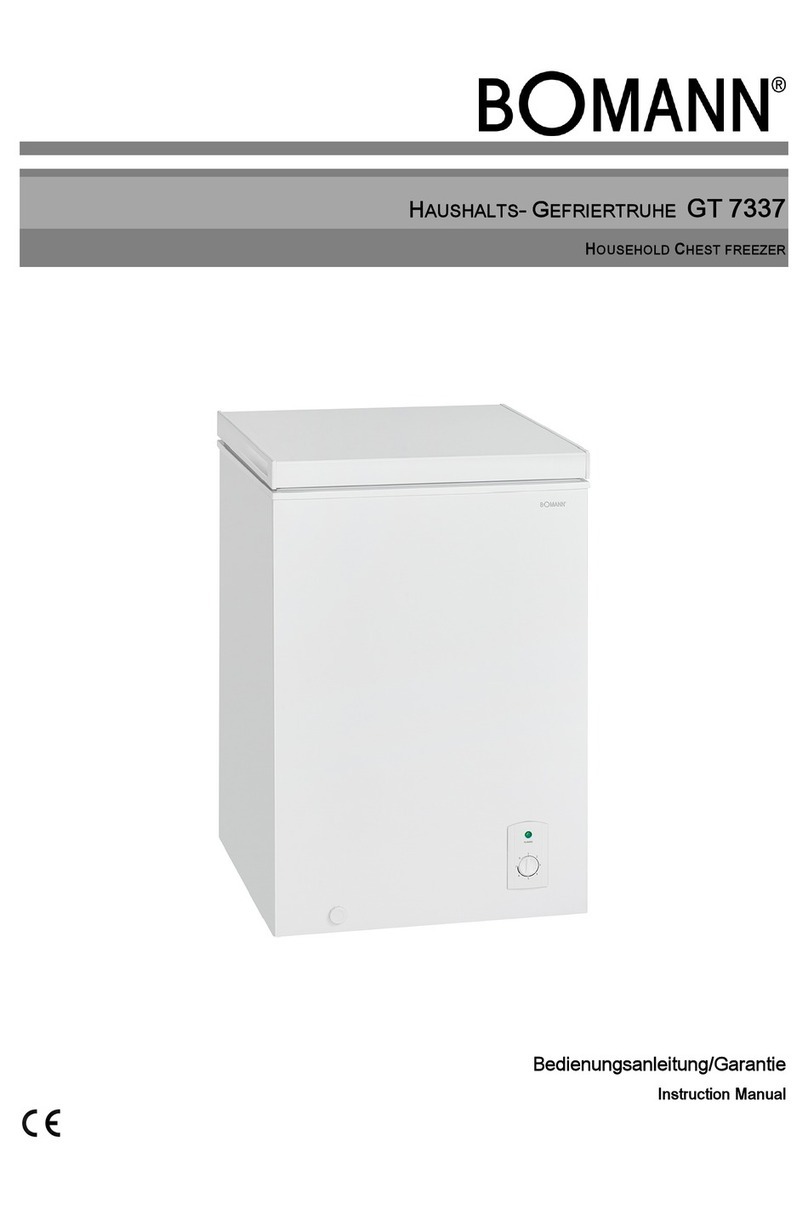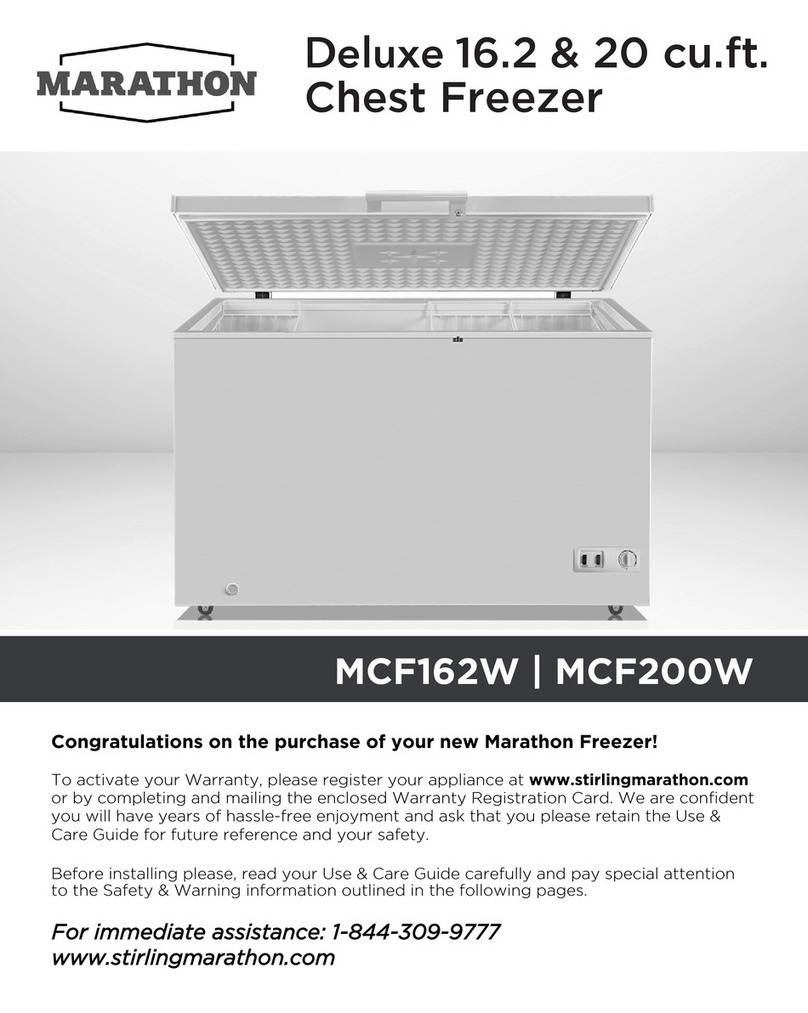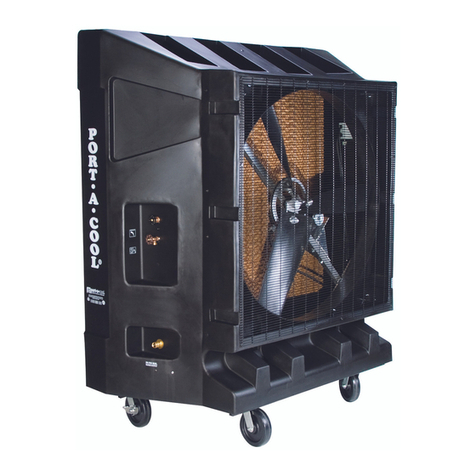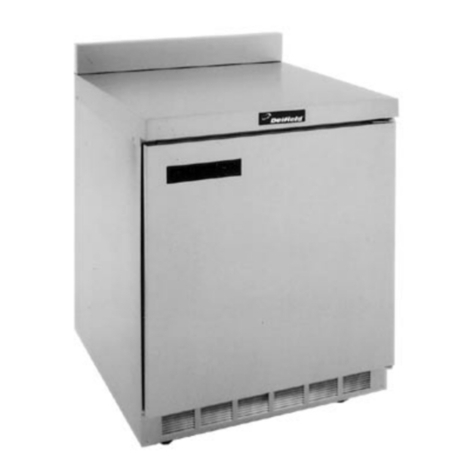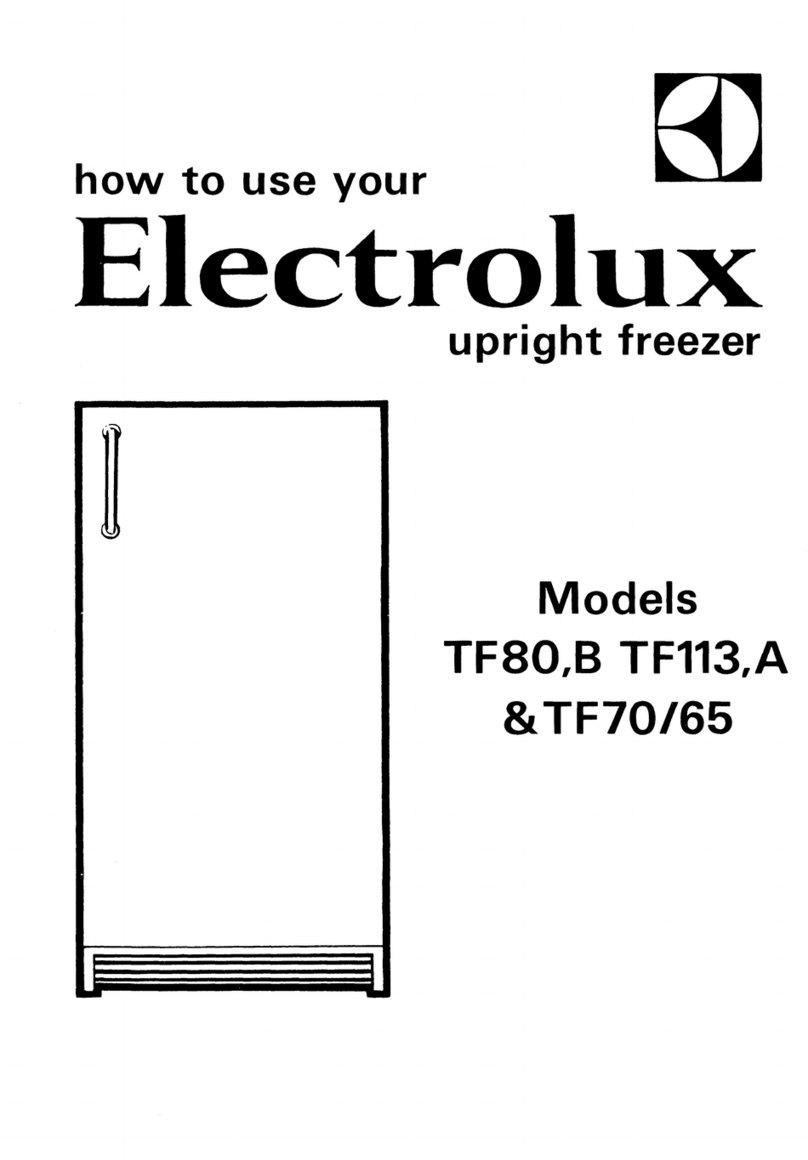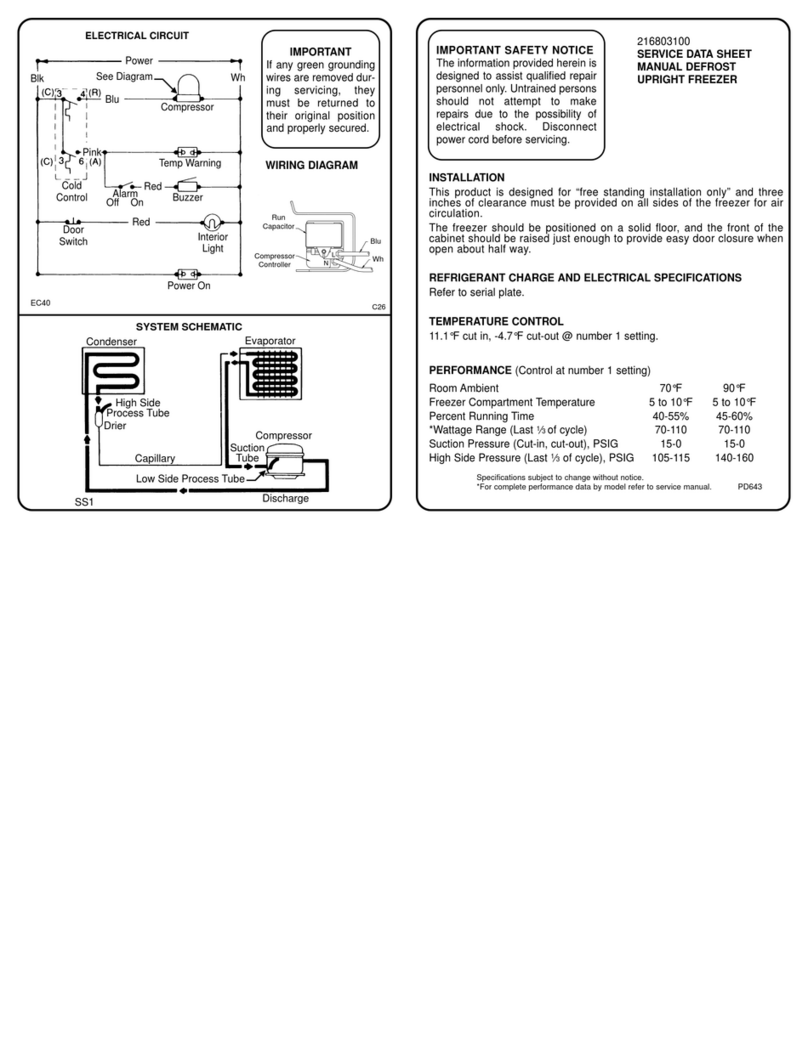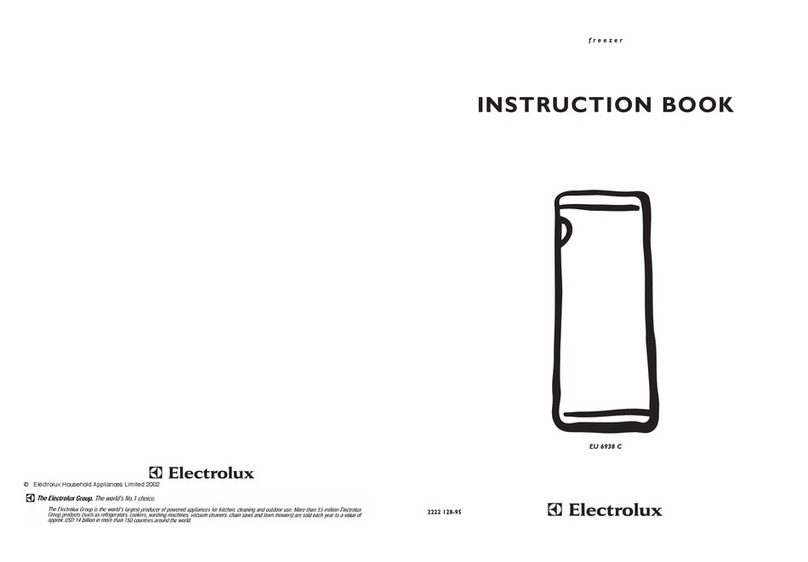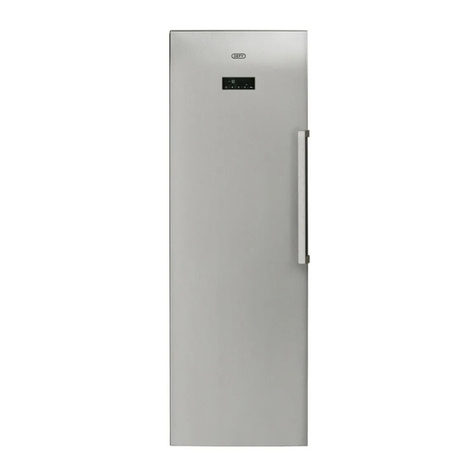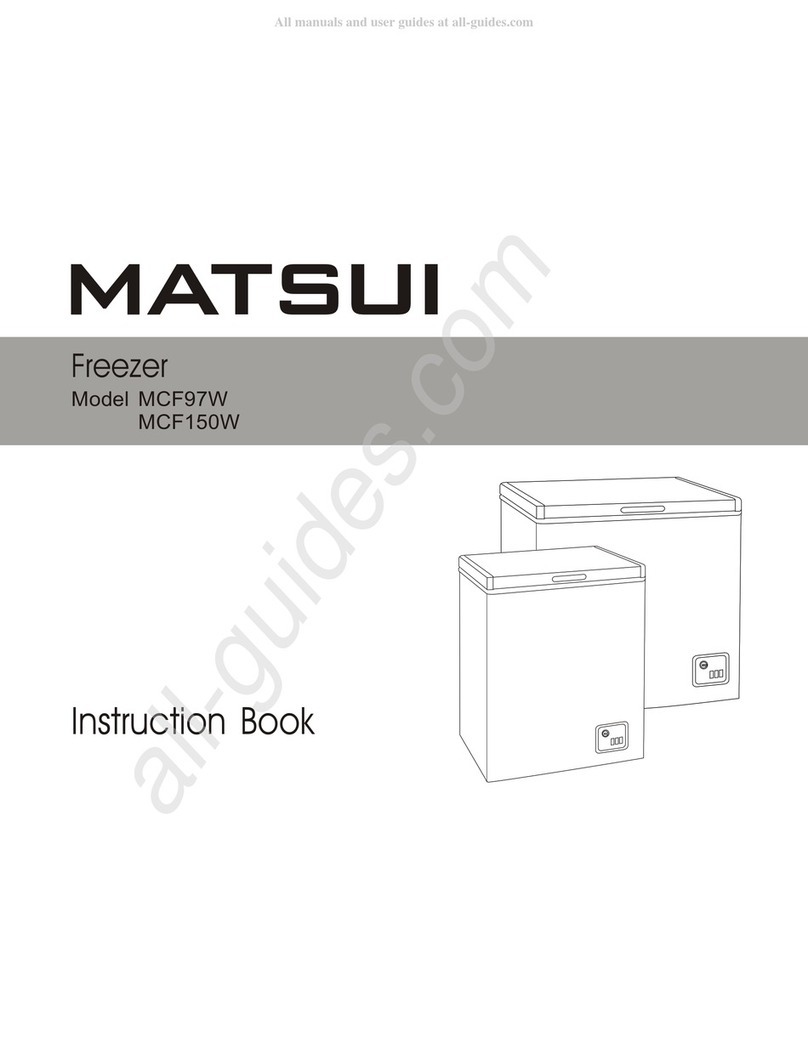Lincoln COOL ARC 47 User manual

IM3050
05/2016
REV07
COOL ARC
®
47
OPERATOR’S MANUAL
ENGLISH
THE LINCOLN ELECTRIC COMPANY
22801 St. Clair Avenue ●Cleveland, OH ●44117-1199 ●U.S.A.
Phone: +1.216.481.8100 ●www.lincolnelectric.com

English I English
12/05
THANKS! For having chosen the QUALITY of Lincoln Electric products.
•Please Examine Package and Equipment for Damage. Claims for material damaged in shipment must be notified
immediately to the dealer.
•For future reference record in the table below your equipment identification information. Model Name, Code & Serial
Number can be found on the machine rating plate.
Model Name:
………………………………………………………………………………………………………………………………………….
Code & Serial Number:
………………………………………………………………….. …………………………………………………………………..
Date & Where Purchased
…………………………………………………………………. …………………………………………………………………..
ENGLISH INDEX
Safety.................................................................................................................................................................................. 1
Introduction ......................................................................................................................................................................... 4
Unpacking the COOL ARC
®
47........................................................................................................................................... 4
Installation on Power Source............................................................................................................................................... 4
Installation and Operator Instructions.................................................................................................................................. 5
Electromagnetic Compatibility (EMC)................................................................................................................................ 10
Technical Specifications.................................................................................................................................................... 11
WEEE................................................................................................................................................................................ 12
Spare Parts ....................................................................................................................................................................... 12
Electrical Schematic.......................................................................................................................................................... 13

English I English
COOL ARC
®
47
THANK YOU FOR SELECTING
A QUALITY PRODUCT BY
LINCOLN ELECTRIC.
PLEASE EXAMINE CARTON AND EQUIPMENT FOR
DAMAGE IMMEDIATELY
When this equipment is shipped, title passes to the
purchaser upon receipt by the carrier. Consequently,
Claims for material damaged in shipment must be made
by the purchaser against the transportation company at
the time the shipment is received.
SAFETY DEPENDS ON YOU
Lincoln arc welding and cutting equipment is designed
and built with safety in mind. However, your overall
safety can be increased by proper installation ... and
thoughtful operation on your part. DO NOT INSTALL,
OPERATE OR REPAIR THIS EQUIPMENT WITHOUT
READING THIS MANUAL AND THE SAFETY
PRECAUTIONS CONTAINED THROUGHOUT.
And, most importantly, think before you act and be
careful.
WARNING
This statement appears where the information must be
followed exactly to avoid serious personal injury or loss
of life.
CAUTION
This statement appears where the information must be
followed to avoid minor personal injury or damage to this
equipment.
KEEP YOUR HEAD OUT OF THE FUMES.
DON’T get too close to the arc.
Use corrective lenses if
necessary to stay a reasonable
distance away from the arc.
READ and obey the Material
Safety Data Sheet (MSDS) and
the warning label that appears on
all containers of welding
materials.
USE ENOUGH VENTILATION or exhaust at the arc, or
both, to keep the fumes and gases from your breathing
zone and the general area.
IN A LARGE ROOM OR OUTDOORS, natural
ventilation may be adequate if you keep your head out of
the fumes (See below).
USE NATURAL DRAFTS or fans to keep the fumes
away from your face.
If you develop unusual symptoms, see your supervisor.
Perhaps the welding atmosphere and ventilation system
should be checked.
WEAR CORRECT EYE, EAR & BODY PROTECTION
PROTECT your eyes and face with
welding helmet properly fitted and with
proper grade of filter plate (See ANSI
Z49.1).
PROTECT your body from welding
spatter and arc flash with protective
clothing including woolen clothing, flame-
proof apron and gloves, leather leggings,
and high boots.
PROTECT others from splatter, flash,
and glare with protective screens or
barriers.
IN SOME AREAS, protection from noise
may be appropriate.
BE SURE protective equipment is in good
condition.
Also, wear safety glasses in work area
AT ALL TIMES.
SPECIAL SITUATIONS
DO NOT WELD OR CUT containers or materials which
previously had been in contact with hazardous
substances unless they are properly cleaned. This is
extremely dangerous.
DO NOT WELD OR CUT painted or plated parts unless
special precautions with ventilation have been taken.
They can release highly toxic fumes or gases.
Additional precautionary measures
PROTECT compressed gas cylinders from
excessive heat, mechanical shocks, and arcs;
fasten cylinders so they cannot fall.
BE SURE cylinders are never grounded or part
of an electrical circuit.
REMOVE all potential fire hazards from welding
area.
ALWAYS HAVE FIRE FIGHTING EQUIPMENT READY
FOR IMMEDIATE USE AND KNOW HOW TO USE IT.

English 1 English
COOL ARC
®
47
Safety
WARNING
CALIFORNIA PROPOSITION 65 WARNINGS
Diesel Engines
Diesel engine exhaust and some of its constituents are
known to the State of California to cause cancer, birth
defects, and other reproductive harm.
Gasoline Engines
The engine exhaust from this product contains chemicals
known to the State of California to cause cancer, birth
defects, or other reproductive harm.
ARC WELDING CAN BE HAZARDOUS. PROTECT
YOURSELF AND OTHERS FROM POSSIBLE
SERIOUS INJURY OR DEATH. KEEP CHILDREN
AWAY. PACEMAKER WEARERS SHOULD CONSULT
WITH THEIR DOCTOR BEFORE OPERATING.
Read and understand the following safety highlights. For
additional safety information, it is strongly recommended
that you purchase a copy of "Safety in Welding &
Cutting - ANSI Standard Z49.1" from the American
Welding Society, P.O. Box 351040, Miami, Florida 33135
or CSA Standard W117.2-1974. A Free copy of
"Arc Welding Safety" booklet E205 is available from the
Lincoln Electric Company, 22801 St. Clair Avenue,
Cleveland, Ohio 44117-1199.
BE SURE THAT ALL INSTALLATION, OPERATION,
MAINTENANCE AND REPAIR PROCEDURES ARE
PERFORMED ONLY BY QUALIFIED INDIVIDUALS.
FOR ENGINE POWERED
EQUIPMENT.
1.a. Turn the engine off before troubleshooting
and maintenance work unless the
maintenance work requires it to be running.
1.b. Operate engines in open, well-ventilated areas or
vent the engine exhaust fumes outdoors.
1.c. Do not add the fuel near an open flame
welding arc or when the engine is running.
Stop the engine and allow it to cool before
refueling to prevent spilled fuel from
vaporizing on contact with hot engine parts and
igniting. Do not spill fuel when filling tank. If fuel is
spilled, wipe it up and do not start engine until fumes
have been eliminated.
1.d. Keep all equipment safety guards, covers
and devices in position and in good repair.
Keep hands, hair, clothing and tools away
from V-belts, gears, fans and all other
moving parts when starting, operating or repairing
equipment.
1.e. In some cases it may be necessary to remove safety
guards to perform required maintenance. Remove
guards only when necessary and replace them when
the maintenance requiring their removal is complete.
Always use the greatest care when working near
moving parts.
1.f. Do not put your hands near the engine fan. Do not
attempt to override the governor or idler by pushing
on the throttle control rods while the engine is
running.
1.g. To prevent accidentally starting gasoline engines
while turning the engine or welding generator during
maintenance work, disconnect the spark plug wires,
distributor cap or magneto wire as appropriate.
1.h. To avoid scalding, do not remove the
radiator pressure cap when the engine is
hot.
ELECTRIC AND
MAGNETIC FIELDS
MAY BE DANGEROUS
2.a. Electric current flowing through any conductor
causes localized Electric and Magnetic Fields (EMF).
Welding current creates EMF fields around welding
cables and welding machines
2.b. EMF fields may interfere with some pacemakers,
and welders having a pacemaker should consult
their physician before welding.
2.c. Exposure to EMF fields in welding may have other
health effects which are now not known.
2.d. All welders should use the following procedures in
order to minimize exposure to EMF fields from the
welding circuit:
2.d.1. Route the electrode and work cables together
– Secure them with tape when possible.
2.d.2. Never coil the electrode lead around your
body.
2.d.3. Do not place your body between the electrode
and work cables. If the electrode cable is on
your right side, the work cable should also be
on your right side.
2.d.4. Connect the work cable to the workpiece as
close as possible to the area being welded.
2.d.5. Do not work next to welding power source.

English 2 English
COOL ARC
®
47
ELECTRIC SHOCK
CAN KILL.
3.a. The electrode and work (or ground) circuits are
electrically “hot” when the welder is on. Do not touch
these “hot” parts with your bare skin or wet clothing.
Wear dry, hole-free gloves to insulate hands.
3.b. Insulate yourself from work and ground using dry
insulation. Make certain the insulation is large
enough to cover your full area of physical contact
with work and ground.
In addition to the normal safety precautions, if
welding must be performed under electrically
hazardous conditions (in damp locations or
while wearing wet clothing; on metal structures
such as floors, gratings or scaffolds; when in
cramped positions such as sitting, kneeling or
lying, if there is a high risk of unavoidable or
accidental contact with the workpiece or ground)
use the following equipment:
•Semiautomatic DC Constant Voltage (Wire)
Welder.
•DC Manual (Stick) Welder.
•AC Welder with Reduced Voltage Control.
3.c. In semiautomatic or automatic wire welding, the
electrode, electrode reel, welding head, nozzle or
semiautomatic welding gun are also electrically
"hot".
3.d. Always be sure the work cable makes a good
electrical connection with the metal being welded.
The connection should be as close as possible to the
area being welded.
3.e. Ground the work or metal to be welded to a good
electrical (earth) ground.
3.f. Maintain the electrode holder, work clamp, welding
cable and welding machine in good, safe operating
condition. Replace damaged insulation.
3.g. Never dip the electrode in water for cooling.
3.h. Never simultaneously touch electrically “hot” parts of
electrode holders connected to two welders because
voltage between the two can be the total of the open
circuit voltage of both welders.
3.i. When working above floor level, use a safety belt to
protect yourself from a fall should you get a shock.
3.j. Also see It ems 6.c. and 8.
ARC RAYS CAN BURN.
4.a. Use a shield with the proper filter and cover plates
to protect your eyes from sparks and the rays of
the arc when welding or observing open arc welding.
Headshield and filter lens should conform to
ANSI Z87. I standards.
4.b. Use suitable clothing made from durable flame-
resistant material to protect your skin and that of
your helpers from the arc rays.
4.c. Protect other nearby personnel with suitable, non-
flammable screening and/or warn them not to watch
the arc nor expose themselves to the arc rays or to
hot spatter or metal.
FUMES AND GASES
CAN BE DANGEROUS.
5.a. Welding may produce fumes and gases hazardous
to health. Avoid breathing these fumes and gases.
When welding, keep your head out of the fume. Use
enough ventilation and/or exhaust at the arc to keep
fumes and gases away from the breathing zone.
When welding with electrodes which require
special ventilation such as stainless or hard
facing (see instructions on container or MSDS)
or on lead or cadmium plated steel and other
metals or coatings which produce highly toxic
fumes, keep exposure as low as possible and
within applicable OSHA PEL and ACGIH TLV
limits using local exhaust or mechanical
ventilation. in confined spaces or in some
circumstances, outdoors, a respirator may be
required. additional precautions are also
required when welding on galvanized steel.
5.b. The operation of welding fume control equipment is
affected by various factors including proper use and
positioning of the equipment, maintenance of the
equipment and the specific welding procedure and
application involved. Worker exposure level should
be checked upon installation and periodically
thereafter to be certain it is within applicable OSHA
PEL and ACGIH TLV limits.
5.c. Do not weld in locations near chlorinated
hydrocarbon vapors coming from degreasing,
cleaning or spraying operations. The heat and rays
of the arc can react with solvent vapors to form
phosgene, a highly toxic gas, and other irritating
products.
5.d. Shielding gases used for arc welding can displace
air and cause injury or death. Always use enough
ventilation, especially in confined areas, to insure
breathing air is safe.
5.e. Read and understand the manufacturer’s
instructions for this equipment and the consumables
to be used, including the material safety data sheet
(MSDS) and follow your employer’s safety practices.
MSDS forms are available from your welding
distributor or from the manufacturer.
5.f. Also see item 1.b.

English 3 English
COOL ARC
®
47
WELDING AND CUTTING
SPARKS CAN CAUSE
FIRE OR EXPLOSION.
6.a. Remove fire hazards from the welding area. If this is
not possible, cover them to prevent the welding
sparks from starting a fire. Remember that welding
sparks and hot materials from welding can easily go
through small cracks and openings to adjacent
areas. Avoid welding near hydraulic lines. Have a
fire extinguisher readily available.
6.b. Where compressed gases are to be used at the job
site, special precautions should be used to prevent
hazardous situations. Refer to "Safety in Welding
and Cutting" (ANSI Standard Z49.1) and the
operating information for the equipment being used.
6.c. When not welding, make certain no part of the
electrode circuit is touching the work or ground.
Accidental contact can cause overheating and create
a fire hazard.
6.d. Do not heat, cut or weld tanks, drums or containers
until the proper steps have been taken to insure that
such procedures will not cause flammable or toxic
vapors from substances inside. They can cause an
explosion even though they have been "cleaned".
For information, purchase "Recommended Safe
Practices for the Preparation for Welding and Cutting
of Containers and Piping That Have Held Hazardous
Substances", AWS F4.1 from the American Welding
Society (see address above).
6.e. Vent hollow castings or containers before heating,
cutting or welding. They may explode.
6.f. Sparks and spatter are thrown from the welding arc.
Wear oil free protective garments such as leather
gloves, heavy shirt, cuffless trousers, high shoes and
a cap over your hair. Wear ear plugs when welding
out of position or in confined places. Always wear
safety glasses with side shields when in a welding
area.
6.g. Connect the work cable to the work as close to the
welding area as practical. Work cables connected to
the building framework or other locations away from
the welding area increase the possibility of the
welding current passing through lifting chains, crane
cables or other alternate circuits. This can create fire
hazards or overheat lifting chains or cables until they
fail.
6.h. Also see item 1.c.
6.i. Read and follow NFPA 51B "Standard for Fire
Prevention During Welding, Cutting and Other Hot
Work", available from NFPA, 1 Batterymarch Park,
PO box 9101, Quincy, Ma 022690-9101.
6.j. Do not use a welding power source for pipe thawing.
CYLINDER MAY EXPLODE IF
DAMAGED.
7.a. Use only compressed gas cylinders
containing the correct shielding gas for
the process used and properly operating
regulators designed for the gas and
pressure used. All hoses, fittings, etc. should be
suitable for the application and maintained in good
condition.
7.b. Always keep cylinders in an upright position securely
chained to an undercarriage or fixed support.
7.c. Cylinders should be located:
•Away from areas where they may be struck or
subjected to physical damage.
•A safe distance from arc welding or cutting
operations and any other source of heat, sparks,
or flame.
7.d. Never allow the electrode, electrode holder or any
other electrically "hot" parts to touch a cylinder.
7.e. Keep your head and face away from the cylinder
valve outlet when opening the cylinder valve.
7.f. Valve protection caps should always be in place and
hand tight except when the cylinder is in use or
connected for use.
7.g. Read and follow the instructions on compressed gas
cylinders, associated equipment, and CGA
publication P-l, "Precautions for Safe Handling of
Compressed Gases in Cylinders", available from the
Compressed Gas Association 1235 Jefferson Davis
Highway, Arlington, VA 22202.
FOR ELECTRICALLY
POWERED EQUIPMENT.
8.a. Turn off input power using the disconnect switch at
the fuse box before working on the equipment.
8.b. Install equipment in accordance with the U.S.
National Electrical Code, all local codes and the
manufacturer’s recommendations.
8.c. Ground the equipment in accordance with the U.S.
National Electrical Code and the manufacturer’s
recommendations.
Refer to
http://www.lincolnelectric.com/safety
for additional safety information.

English 4 English
COOL ARC
®
47
Introduction
The COOL ARC
®
47 is a cooling system designed for
use with water-cooled torches and guns:
•GTAW torches
•GMAW guns up to 500A.
The following equipment is included with the
COOL ARC
®
47:
•Hose with quick water connector – 7,874in (0,2m).
The COOL ARC
®
47 is delivered empty with no coolant
in the system. It is recommended to use KP4159-1 low
conductivity coolant.
Unpacking the COOL ARC
®
47
The packaging of the Cooler is designed to withstand
shipping abuse, and contains a cardboard liner that
surrounds the unit. If any shipping damage has
occurred, contact your certified Lincoln distributor or
service center. When unpacking the unit, avoid thrusting
sharp objects through the carton liner, which may
puncture the plastic reservoir. Save the instruction
manual supplied with the COOL ARC
®
47 for parts
others and future maintenance service.
Installation on Power Source
The COOL ARC
®
47 is designed to mount directly to
the bottom of a Aspect 275 or Aspect 375 power source.
Always place the COOL ARC
®
47 on a level surface to
avoid causing the machine to topple over.
Figure 1

English 5 English
COOL ARC
®
47
Installation and Operator Instructions
Read this entire section before installation or operation
of the machine.
This machine will operate in harsh environments.
However, it is important that simple preventative
measures are followed to assure long life and reliable
operation:
•Do not place or operate this machine on a surface
with an incline greater than 15°from horizontal.
•Do not use this machine for pipe thawing.
•This machine must be located where there is free
circulation of clean air without restrictions for air
movement to and from the air vents. Do not cover
the machine with paper, cloth or rags when switched
on.
•Dirt and dust that can be drawn into the machine
should be kept to a minimum.
•This machine has a protection rating of IP23. Keep it
dry, shelter it from rain & snow and do not place it on
wet ground or in puddles.
•Locate the machine away from radio controlled
machinery. Normal operation may adversely affect
the operation of nearby radio controlled machinery,
which may result in injury or equipment damage.
Read the section on electromagnetic compatibility in
this manual.
•Do not operate in areas with an ambient temperature
greater than 104°F (40°C).
Recommended power source
The COOL ARC
®
47 is designed for use with water-
cooled guns and torches. The COOL ARC
®
47 can be
used with power sources:
•Aspect 275
•Aspect 375.
Input Supply Connection
The COOL ARC
®
47 should be supplied by a welding
power source using a NEMA 5-15R receptacle.
To connect the input supply to the COOL ARC
®
47, turn
off the power to the welding power source and
disconnect it from the input supply.
The allowable input voltage is 115V, 60Hz.
Make sure that the supply voltage of the unit matches
the cooler’s rated voltage.
WARNING
Do not switch on the welding power source with the
cooler connected if the reservoir was not filled and the
torch’s/gun’s hoses are disconnected from the cooling
unit. Not observing this warning may cause internal
damage to the cooler unit.
Controls and Operational Features
I
SENSOR
O
MINIMUM
LIQUID
LEVEL
2
4
5
3
1
6
MAXIMUM
LIQUID
LEVEL
Figure 2
1. Power Indicator Light: This lamp will light up
to indicate that the cooler is supplied by the
power source.
2. Flow Sensor Switch: The Cool Arc 47 comes
equipped with a flow sensor that triggers an error
code at the machine to protect the TIG Torch from
over-heating when inadequate coolant flow is
detected through the flow sensor. The Error Code
fault (Error 11) could indicate a possible kink in the
torch lines, damage and/or a leak in the TIG Torch
coolant lines, or signal the need to use a TIG Torch
that is of a higher amperage capacity and rating.
The flow sensor can be turned ON or OFF, but is set
to a default ON position when first powered on out of
the box.
WARNING
Incorporated into the cooler is an automatic flow sensor
to detect low or no coolant flow. A low or no flow
condition will cause welding output to automatically stop
to protect the torch.
3. Reservoir for Coolant with Cap: The translucent
reservoir enables control of volume of the coolant.
4. Quick Connect Coupling: Coolant outlet
(supplies cool coolant to the torch/gun).
5. Quick Connect Coupling: Coolant inlet
(takes warm coolant from torch/gun).
6. Minimum and maximum Liquid Level: Determine the
level of coolant in which the cooler can work.

English 6 English
COOL ARC
®
47
98 7
Figure 3
7. Power Lead with NEMA 5-15 Plug.
8. Control Receptacle: To exchange information
between the cooler and a power source.
9. Airflow Slots: Enable proper circulation of air cooling
(Figure 4).
Figure 4.
WARNING
Moving parts can injure. Never place fingers into the
openings of the Cooler.
WARNING
Avoid placing the cooler near a flux hopper or an area
where dust build-up is extreme.
Circulation of Coolant in the Cooler
Figure 5.
Warning: The ambient air temperature influences the
parameters of cooling. If the ambient temperature is
higher, the cooling system will be less effective.
WARNING
Avoid placing the cooler near areas of extreme heat.
WARNING
Avoid kinking or putting sharp bends in any water lines.
WARNING
Never operate the cooler with case off.
Coolant and Filling the Reservoir
WARNING
Before filling the coolant reservoir, disconnect cooler’s
power lead to the power source.
WARNING
Avoid contact with coolant. Wear waterproof gloves and
protective eye wear.
Warning: The cooler can be filled and used only in the
horizontal position.
Use KP4159-1 low conductivity coolant.
Do not use pre-packaged welding industry coolants.
These coolants may contain oil-based substances,
which attack the plastic components of the cooler. Once
added to the cooler, these substances are impossible to
purge from the water lines and heat exchanger.
Do not use automotive anti-freeze. These coolants will
damage the pump and block of the heat exchanger,
affecting cooling performance.
WARNING
The coolant reservoir can be filled with a maximum of
1,58 gal (6 liters) of coolant. A minimum of 1,06 gal (4l)
of coolant has to be poured into the reservoir.
WARNING
Never operate the cooler with the reservoir empty.
WARNING
Do not start the cooler with less than 1,06 gal (4 liters) of
coolant.
Operating without enough coolant can prevent full
priming of the system and may damage the pump.

English 7 English
COOL ARC
®
47
Priming Pump (only for first time use)
and Bleeding the Cooling System
Figure 6.
•Assemble the welding setup.
•Connect the short hose with quick water connectors
(included with the equipment) to the cooler’s inlet
and outlet sockets (Figure 6).
•Fill the coolant reservoir – minimum 1,06 gal
(4 liters).
•Remove the reservoir cap.
WARNING
During the first use of the COOL ARC
®
47, the reservoir
cap must be removed to avoid generating a partial
vacuum in the cooling system while priming the pump.
•Turn the power source on.
•Wait 30 seconds until the coolant fully circulates
through the cooling system and returns into the
reservoir.
•Turn the power source off.
•Disconnect the short hose with quick water
connectors.
•Connect the torch water-cooler hoses – Figure 7.
•Turn the power source on.
•Wait 30 seconds until the coolant fully circulates the
cooling system and returns into the reservoir.
•Tighten the cap.
WARNING
After priming the pump and/or bleeding the cooling
system, be sure the reservoir’s cap is tightened.
Operating the cooler without the cap tightened, can
cause poor cooling efficiency, evaporation loss of
coolant, and low product life.
•The welding set is ready to work.
Connecting the Cooling System Hoses
•The power source has to be turned off.
•Connect the "inlet" hose of torch/gun
(colored or tagged blue on most hoses) into
the outlet quick connect coupling [4] located
on the front panel of the cooler.
•Connect the "outlet" hose of torch/gun
(colored or tagged red on most hoses) into
the inlet quick connect coupling [5] located
on the front panel of the cooler.
Figure 7.
Warning: The water-cooler hoses are connected into
the quick connect coupling type 21KATS09MPX (see
"Spare parts" section), which automatically close when
hoses are disconnected.
Before installing the hoses to the cooler, you should
check if the hose connectors match the quick connect
couplings located on the front panel of the cooler.
WARNING
Avoid kinking or putting sharp bends in any water lines.
WARNING
Keep all water lines clean and free of any blockage.
WARNING
Keep the reservoir full especially after changing any
water lines.
Transport
To avoid freeze damage and water leakage during
transport, the coolant must be removed from the cooler’s
reservoir.

English 8 English
COOL ARC
®
47
Maintenance
WARNING
For any repair operations, modifications or maintenance,
it is recommended to contact the nearest Technical
Service Center or Lincoln Electric. Repairs and
modifications performed by unauthorized service or
personnel will cause the manufacturer’s warranty to
become null and void.
Any noticeable damage should be reported immediately
and repaired.
Routine maintenance
•Check the condition of water-cooler hoses and
connections of the power lead.
•Check the welding torch / gun condition: replace it, if
necessary.
•Check condition and operation of the cooling fan.
Keep its airflow slots clean.
•The reservoir volume should be checked daily before
using the cooler!!
•Keep the reservoir full, especially after disconnecting
the water lines or changing the accessory being
cooled.
Periodic maintenance (not less than once a year)
Perform the routine maintenance and, in addition:
•Keep the machine clean. Using a dry (and low
pressure) airflow, remove the dust from the external
case and from the heat exchanger inside.
•In dirty or dusty environments or if biological growth
occurs in the coolant, it may be necessary to flush
the coolant reservoir. Drain the old coolant, rinse the
inside of the reservoir and circulate rinsing solution
through the coolant system. Add new coolant when
cleaning is finished.
WARNING
Hot coolant can burn skin. Always be sure coolant is
NOT HOT before servicing the cooler.
WARNING
Special precautions have to be taken when
the coolant is removed from the cooler
reservoir. The coolant must not be poured
out into ground water, sewerage, or soil.
Read "Material Safety Data Sheet" (coolant
used) and contact the local Department of
Environmental Protection office to obtain
information on recycling coolant.
The frequency of the maintenance operations may vary
in accordance with the working environment where the
machine is placed.
WARNING
Do not touch electrically live parts.
WARNING
Before the case of machine will be removed, the
machine has to be turned off and the power lead has to
be disconnected from mains socket.
WARNING
Mains supply network must be disconnected from the
machine before each maintenance and service. After
each repair, perform proper tests to ensure safety.
Pump maintenance
•The pump head has a "built in" strainer on the
inlet side of the pump. It is recommended to
clean or replace the pump's inlet strainer at
least once a year.
•Drain the coolant reservoir and all coolant lines.
Dispose of the coolant properly as specified
above.
•Remove the pump cover to expose the pump
head.
•Hold the pump head firmly to apply a counter-
torque when loosing the strainer's 7/8" acorn
nut located on the bottom. Do not confuse with
3/4" acorn nut. Remove nut and slide inlet
strainer down and out from the pump head.
•Gently rinse the strainer under running water to
thoroughly clean it.
•Use a mirror to inspect the inside of the pump
for contamination. Carefully remove hardened
debris with a dental pick if necessary, without
scratching the inside of the pump. Use care not
to drop debris into pump.
•Reinstall the strainer and 7/8 acorn nut,
tightening with 75+/-15 in-lbs. of torque. Wipe
dry all area wetted with coolant. Dispose of
coolant soaked towels properly as specified
above.
Pump motor
It is recommended to re-oil the pump motor bearings
once a year as follows:
•Remove the plastic plugs located on the top of
both the inboard and outboard bearing end-
caps.
•Re-oil each bearing with 30-35 drops of SAE 20
oil then reinstall both plugs.
Pump inlet strainer
Poor cooler performance can usually be traced to a
partially or completely blocked pump inlet strainer. This
is a user-serviceable item and can be cleaned and
reused, or replaced.
Continued pump operation with a blocked strainer can
cause:
•Voiding of cooler service warranty
•Cavitation damage to the pump head’s inlet
areas
•Welding accessory damage from overheating
due to insufficient coolant flow rate.
A new or properly cleaned pump inlet strainer should
restore the cooler’s performance.

English 9 English
COOL ARC
®
47
Troubleshooting
This Troubleshooting Guide is designed to be used by the machine Owner/Operator. Unauthorized repairs performed on
this equipment may result in danger to the technician and machine operator and will invalidate your factory warranty. For
your safety, please observe all safety notes and precautions detailed in the Safety Section of this manual to avoid
electrical shock or danger while troubleshooting this equipment.
WARNING
If for any reason you do not understand the test procedures or are unable to perform the tests/repairs safely, contact the
nearest authorized Technical Service Center or Lincoln Electric for technical troubleshooting assistance before you
proceed.
PROBLEMS POSSIBLE CAUSE RECOMMENDED CORRECTIVE ACTION
Cooler does not
operate.
•Power lead unplugged.
•No power at outlet.
•Power lead is damaged.
•Water lines blocked or crimped.
•Leak in gun or water hoses.
•Reservoir empty.
•Plug in power lead.
•Check outlet circuit breaker.
•Repair damaged lead or order new lead
set.
•Clear blockage in hose. Avoid kinking or
putting sharp bends in water lines.
•Repair leak.
•Fill reservoir.
Internal water leak. •Hose clamp loose on one of internal
hoses.
•Internal hose punctured.
•Heat exchanger leaking.
•Tighten or replace hose clamp.
•Replace punctured hose with new hose.
•Replace heat exchanger.
Leak at inlet/outlet
connector block.
•Hose clamp loose. •Tighten hose clamp onto hose.
Torch or gun runs hot. •Unit placed by area of extreme heat.
•Fan not operating.
•Move unit away from hot air.
•Reference fan section.
Fan operates but there
is low coolant flow.
•Leak in torch/gun or hoses.
•Torch/gun or hoses partially obstructed.
•Reservoir empty or very low.
•Repair leak.
•Clear obstruction.
•Refill reservoir.
Fan operates but there
is no coolant flow.
•Pump failure.
•Pump seized.
•Replace pump.
•Replace pump.
Pump operates, but
fan does not.
•Fan blade contacting heat exchanger.
•Fan motor failure.
•Replace fan.
•Replace fan.
Cooler trips outlet
circuit breaker.
•Circuit overloaded.
•Cooler electrical component failure.
•Check outlet circuit breaker.
•Replace electrical component.
Weld output disabled •Low or no coolant flow.
•Faulty flow sensor.
•Fill reservoir.
•Replace flow sensor.

English 10 English
COOL ARC
®
47
Electromagnetic Compatibility (EMC)
11/04
This machine has been designed in accordance with all relevant directives and standards. However, it may still generate
electromagnetic disturbances that can affect other systems like telecommunications (telephone, radio, and television) or
other safety systems. These disturbances can cause safety problems in the affected systems. Read and understand this
section to eliminate or reduce the amount of electromagnetic disturbance generated by this machine..
This machine has been designed to operate in an industrial area. To operate in a domestic area it is
necessary to observe particular precautions to eliminate possible electromagnetic disturbances. The
operator must install and operate this equipment as described in this manual. If any electromagnetic
disturbances are detected the operator must put in place corrective actions to eliminate these disturbances
with, if necessary, assistance from Lincoln Electric.
Before installing the machine, the operator must check the work area for any devices that may malfunction because of
electromagnetic disturbances. Consider the following.
•Input and output cables, control cables, and telephone cables that are in or adjacent to the work area and the
machine.
•Radio and/or television transmitters and receivers. Computers or computer controlled equipment.
•Safety and control equipment for industrial processes. Equipment for calibration and measurement.
•Personal medical devices like pacemakers and hearing aids.
•Check the electromagnetic immunity for equipment operating in or near the work area. The operator must be sure
that all equipment in the area is compatible. This may require additional protection measures.
•The dimensions of the work area to consider will depend on the construction of the area and other activities that are
taking place.
Consider the following guidelines to reduce electromagnetic emissions from the machine.
•Connect the machine to the input supply according to this manual. If disturbances occur it may be necessary to take
additional precautions such as filtering the input supply.
•The output cables should be kept as short as possible and should be positioned together. If possible connect the
work piece to ground in order to reduce the electromagnetic emissions. The operator must check that connecting the
work piece to ground does not cause problems or unsafe operating conditions for personnel and equipment.
•Shielding of cables in the work area can reduce electromagnetic emissions. This may be necessary for special
applications.
WARNING
The Class A equipment is not intended for use in residential locations where the electrical power is provided by the public
low-voltage supply system. There may be potential difficulties in ensuring electromagnetic compatibility in those
locations, due to conducted as well as radiated disturbances.

English 11 English
COOL ARC
®
47
Technical Specifications
NAME INDEX
COOL ARC
®
47 K3950-1
INPUT
Input Voltage U
1
Input Amperes I
1max
COOL ARC
®
47 115 V ± 10% 5,3 A
Frequency EMC Class
COOL ARC
®
47 60 Hz A
PARAMETERS RATING
The cooling power of flow 1liter per minute at
temperature of 77°F (25°C) Maximum pressure rate
COOL ARC
®
47 2 kW 62 psig (0,43 MPa)
PARAMETERS O FTHE COOLER’S RESERVOIR
Maximum reservoir capacity Minimum required reservoir capacity
COOL ARC
®
47 1,58 gal (6 liters) 1,06 gal (4 liters)
COOLANT
COOL ARC
®
47 Recommended
coolant KP4159-1 low conductivity coolant
COOL ARC
®
47
Do not use!! Pre-packaged welding industry coolants. These coolants may contain
oil-based substances, which attack the plastic components of the
cooler. Once added to the cooler, these substances are impossible to
purge from the water lines and heat exchanger.
Automotive anti-freeze. These coolants will damage the pump and
block of the heat exchanger, affecting cooling performance.
PHYSICAL DIMENSIONS
Weight Height Width Length
COOL ARC
®
47
53,5 lb
(24,5 kg)
10,04 in
(255 mm)
11,81 in
(300 mm)
27,56 in
(700 mm)
Protection Rating Operating Humidity
(t=68°F=20°C) Operating Temperature Storage Temperature
IP23 ≤90 % from 14 ºF to 104 ºF
(from -10 ºC to +40 ºC)
from -13 ºF to 131 ºF
(from -25 ºC to +55 ºC)

English 12 English
COOL ARC
®
47
WEEE
07/06
Spare Parts
12/05
Part list reading instructions
•Do not use this part list for a machine if its code number is not listed. Contact the Lincoln Electric Service
Department for any code number not listed.
•Use the illustration of assembly page and the table below to determine where the part is located for your particular
code machine.
•Use only the parts marked "●" in the column under the heading number called for in the assembly page (# indicate
a change in this printing).
First, read the Part List reading instructions above then refer to the "Spare Part" manual supplied with the machine,
which contains a picture-descriptive part number cross-reference).
English
Do not dispose of electrical equipment together with normal waste!
In observance of European Directive 2002/96/EC on Waste Electrical and Electronic Equipment
(WEEE) and its implementation in accordance with national law, electrical equipment that has reached
the end of its life must be collected separately and returned to an environmentally compatible recycling
facility. As the owner of the equipment, you should get information on approved collection systems
from our local representative.
By applying this European Directive you will protect the environment and human health!

English 13 English
COOL ARC
®
47
Electrical Schematic

IM3050
05/2016
REV07
COOL ARC
®
47
Spare Parts ......................................................................................................................................................................... 1
Figure A: Machine Assembly........................................................................................................................................... 1
Miscellaneous Items (not shown in figure A) ................................................................................................................... 2
THE LINCOLN ELECTRIC COMPANY
22801 St. Clair Avenue ●Cleveland, OH ●44117-1199 ●U.S.A.
Phone: +1.216.481.8100 ●www.lincolnelectric.com

IM3050 - Spare Parts 1 IM3050 - Spare Parts
COOL ARC
®
47
Spare Parts
Do Not use this Parts List for a machine if its code number is not listed. Contact the Service Department for any code
numbers not listed.
Use only the parts marked "●" in the column under the heading number called for in the assembly page (# indicate a
change in this printing).
SP12182 REV06
ASSEMBLY
PAGE NAME
Machine
Assembly
Miscellaneous
Items
CODE NO.: K NO.: FIGURE NO.: A -
12595 K3950-1 COOL ARC
®
47 1 1
1
913
16
223
19
18
17
3 32
11
15 4
35
34
20
27
28 21
26
23 2524
29
12
10
5 33
22
7
30
86
31
36
14
37
Figure A
Figure A: Machine Assembly
Item Description Part Number QTY
1 2 3 4 5 6 7
1 BASE R-1019-321-2/08R 1 ●
2 COVER R-3019-291-1/02R 1 ●
3 FRONT PANEL R-1012-541-2/08R 1 ●
4 REAR PANEL R-1012-542-1/08R 1 ●
5 COVER R-3019-395-1/02R 1 ●
6 BRACKET R-3020-001-1/02R 1 ●
7 BRACKET R-3020-001-2/02R 1 ●

IM3050 - Spare Parts 2 IM3050 - Spare Parts
COOL ARC
®
47
8 BRACKET R-1019-331-1/02R 1 ●
9 BRACKET R-1019-325-1/08R 1 ●
10 CLAMP R-3019-289-1/08R 1 ●
11 RADIATOR COVER R-3020-002-1/08R 1 ●
12 RESERVOIR ASSEMBLY R-8040-242-4R 1 ●
RESERVOIR’S CAP 0653-321-006R 1 ●
13 PUMP R-8040-374-1R 1 ●
14 FAN 0873-100-094R 1 ●
15 RADIATOR 3R 0871-100-022R 1 ●
MALE STUD FITTING 0744-320-057R 2 ●
16 FLOW SENSOR S1 R-8040-371-1R 1 ●
BRACKET R-1019-472-1R 1 ●
17 QUICK CONNECT COUPLING 0744-320-058R 2 ●
MALE STUD FITTING 0744-320-057R 2 ●
THREAD ADAPTER R-2013-168-1R 2 ●
18 LAMP 0917-431-060R 1 ●
19 SWITCH S2 1115-270-007R 1 ●
ROCKER SWITCH BOOT S28672-1 1 ●
20 CABLE CLAMP 1361-599-398R 1 ●
CABLE RELIEF 1361-599-399R 1 ●
21 INSULATION PLATE R-1012-557-2R 1 ●
22 CORNERS S29507 8 ●
23 RELAY BASE 1158-632-017R 1 ●
24 RELAY 0918-412-020R 1 ●
25 ANTI-OVERVOLTAGE MODULE 1158-142-054R 1 ●
26 TERMINAL BLOCKS X3 1131-990-009R 6 ●
27 COVER R-1019-422-1R 1 ●
28 SHIELD R-3019-347-1R 1 ●
29 INSULATOR R-1012-685-1R 1 ●
30 STICKER (COOLANT LEVEL) R-7040-537-2R 1 ●
31 STICKER (WARNING) R-0010-536-1R 1 ●
32 STICKER (FRONT PANEL) R-0010-514-2R 1 ●
33 STICKER (WIRING DIAGRAM) R-7040-498-2R 1 ●
34 POWER LEAD R-5041-295-3R 1 ●
35 SOCKET X2 S18657 1 ●
36 PUMP COVER R-1012-766-1R 1 ●
37 PLUG BUTTON 1119-510-005R 1 ●
Miscellaneous Items (not shown in figure A)
Item Description Part Number QTY
1 2 3 4 5 6 7
38 BYPASS HOSE (NOT SHOWN) D-2218-150-1R 1 ●
39 WIRING HARNESS (NOT SHOWN) R-5041-297-2R 1 ●
40 RATING PLATE (NOT SHOWN) R-7040-497-2R 1 ●
41 COOLER CONTROL CABLE (NOT
SHOWN)
M25183
1 ●
42 ADAPTER
T14557-27
2 ●
Table of contents
